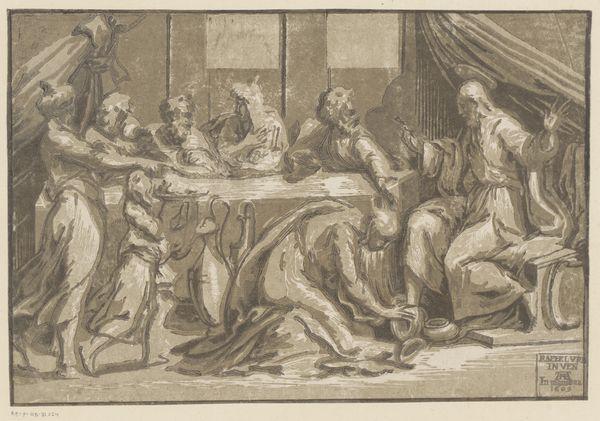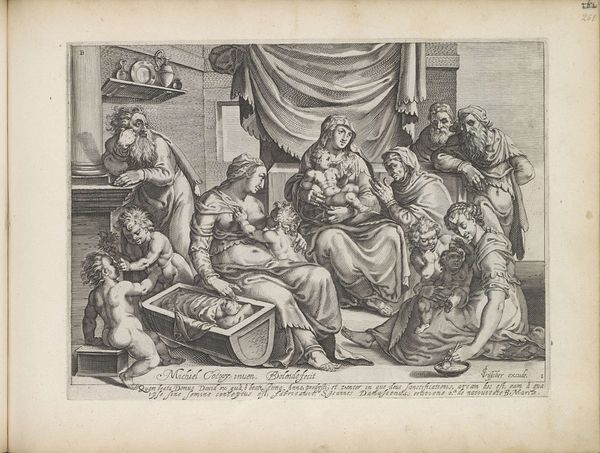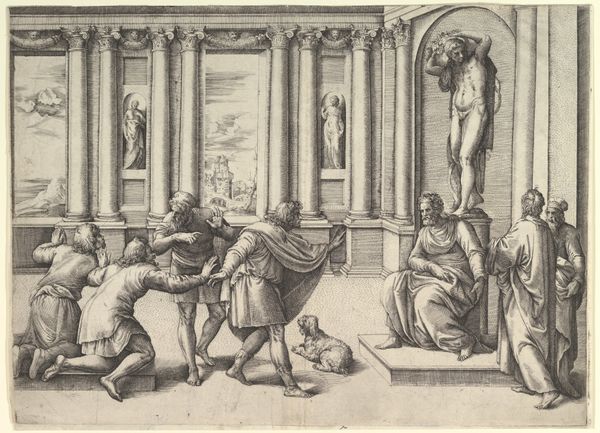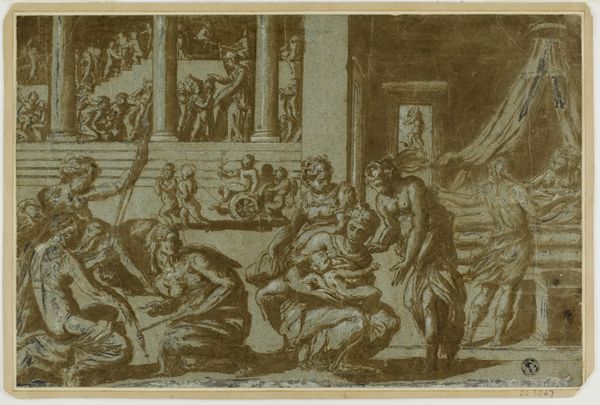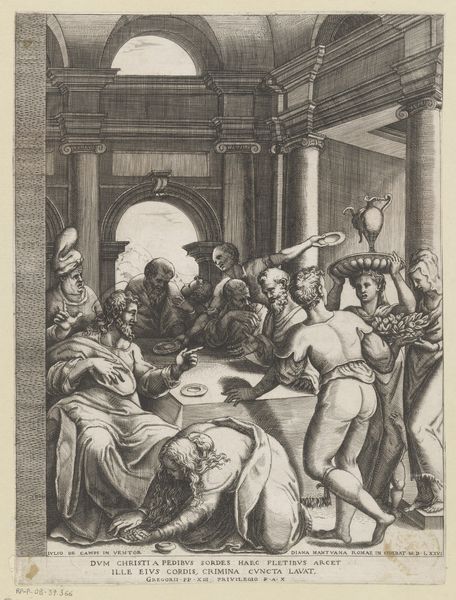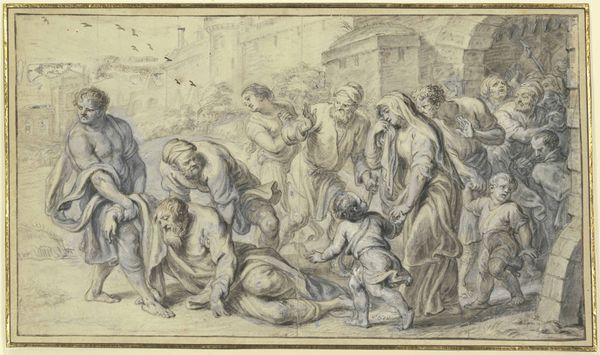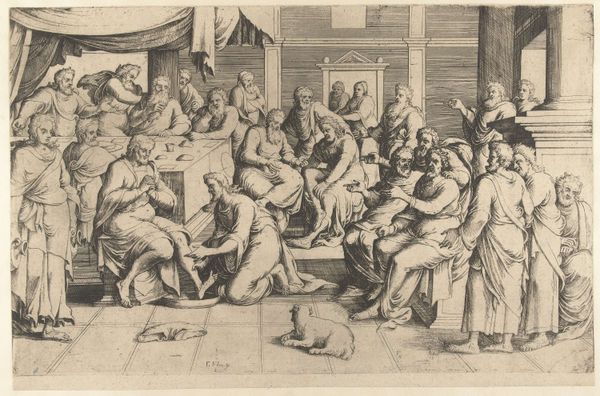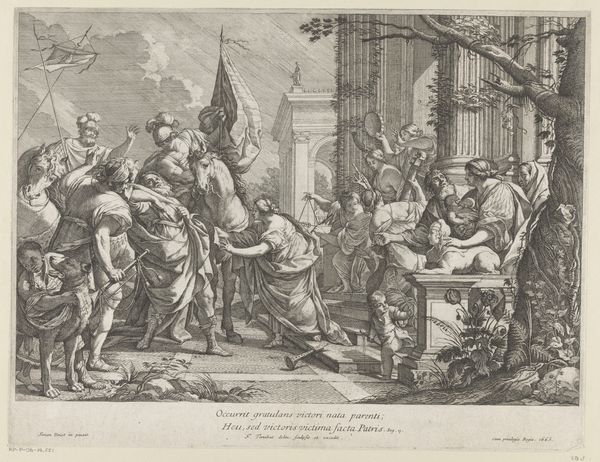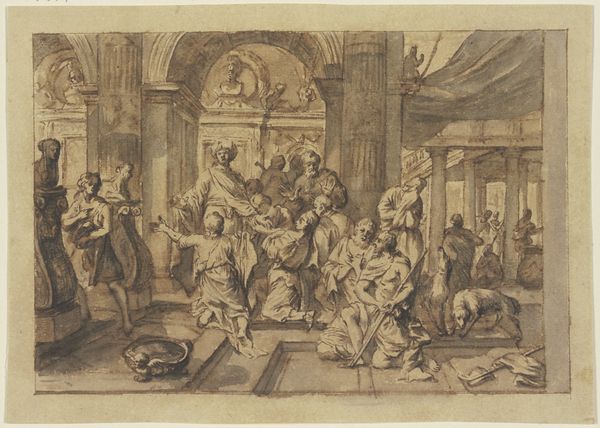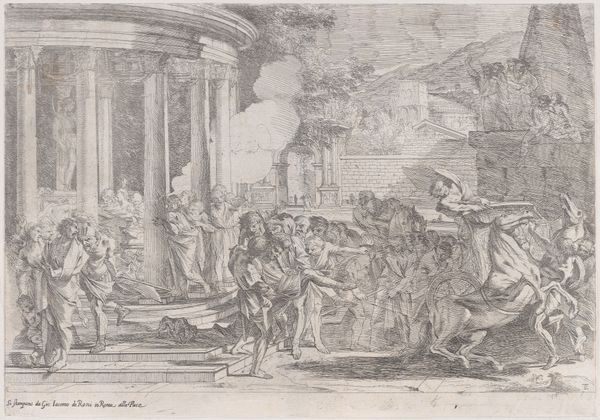
print, engraving
#
baroque
# print
#
pen sketch
#
group-portraits
#
history-painting
#
engraving
Dimensions: height 80 mm, width 115 mm
Copyright: Rijks Museum: Open Domain
Editor: This is "Gezicht op Ameide," created between 1727 and 1733 by Abraham Rademaker. It's an engraving, and it strikes me as quite theatrical, almost like a stage set. What stands out to you? Curator: The 'theatrical' feel is spot on. Prints like this weren't just aesthetic objects; they served a crucial public role. Think of them as proto-photographs, disseminating visual information to a broader audience. What we're seeing is likely less about a realistic depiction of Ameide and more about constructing a particular image of it, one rooted in classical ideals. Editor: Classical ideals? How so? Curator: Look at the architectural backdrop. The columns, the symmetry – it’s invoking a sense of established power and civility, referencing classical antiquity to lend authority and prestige to the depicted scene. Now consider the social function of engravings at that time. They circulated amongst a specific segment of society. Do you see any class implications within that? Editor: I guess… the very act of creating and owning a print like this speaks to a certain level of wealth and education, which were usually the domain of a particular class, right? So this is an idealized view for a specific audience. Curator: Precisely. This image helped reinforce a particular vision of Dutch society for those already benefiting from its structures. It prompts the questions: Who is included, and equally important, who is excluded from this "ideal" representation? Also note how Rademaker strategically uses imagery to suggest both stability and dynamism. Editor: That makes me think about who had the power to shape these public images and narratives… it's a curated reality in a way. I’ll definitely look at prints differently from now on. Curator: Exactly. Analyzing images like this forces us to consider the politics embedded within their creation, circulation, and reception. That, I believe, is the key to understanding art's impact on culture.
Comments
No comments
Be the first to comment and join the conversation on the ultimate creative platform.
